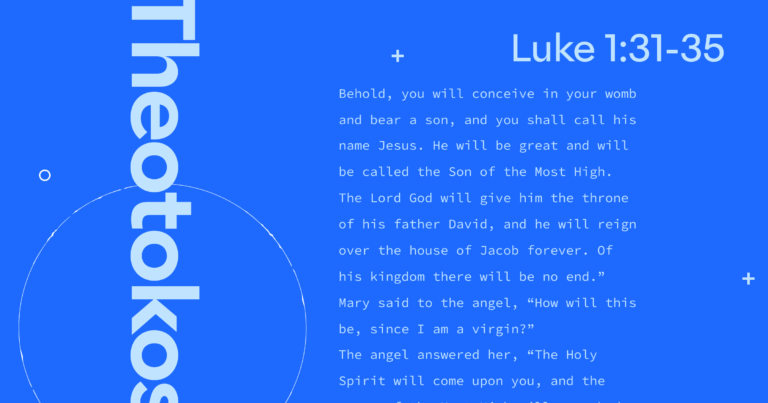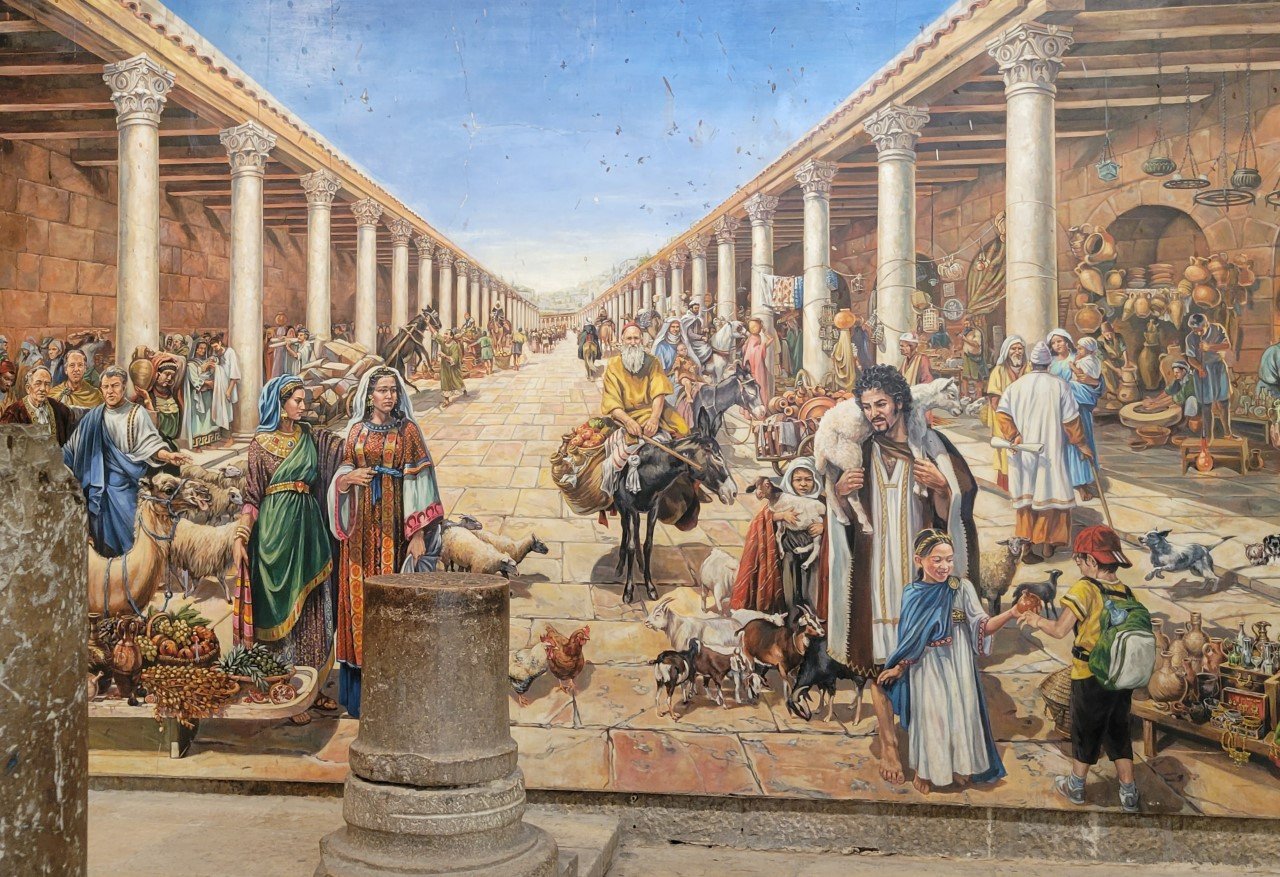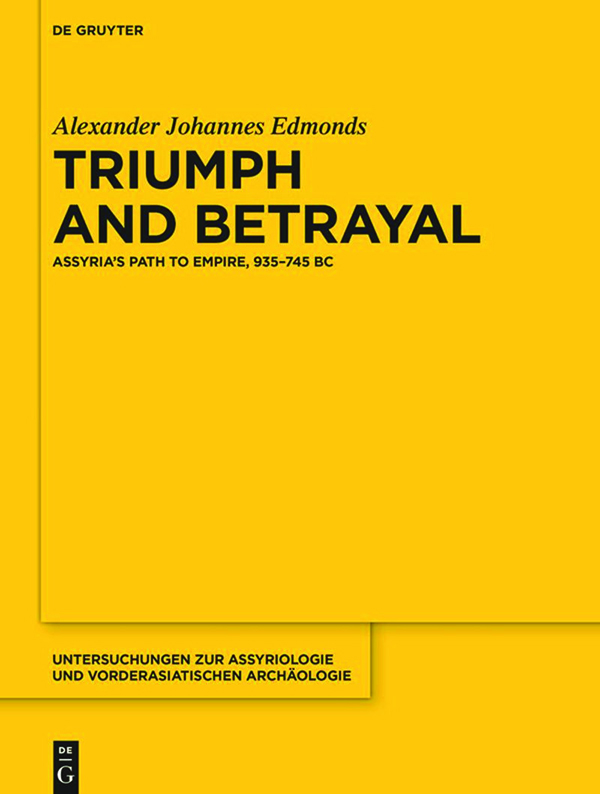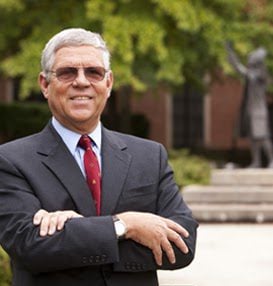
Nestorianism is an ancient heresy that speaks about Christ as if he is two persons instead of one, that is, the one Lord Jesus Christ. The flashpoint in the debate over Nestorianism was Nestorius’s denial that mary bore God in her womb and thus was theotokos, God-bearer. The councils of Ephesus and Chalcedon in 431 and 451 formally condemned Nestorianism.
Most summaries of Nestorianism fail to capture the complexity of the fifth-century debates. To understand the stakes beyond a mere summary, this article aims to explain the teaching of Nestorius, how ancient Christians responded to his teaching, and finally what the church concluded about Christ.
Table of contents
- What is Nestorianism?
- What caused the debate over Nestorius?
- What did Nestorius teach? Was Nestorius a Nestorian?
- What led Nestorius into error?
- What does theotokos mean?
- Is theotokos found in the Bible?
- What did Nestorius say about the hypostatic union?
- Does the debate over Nestorianism matter?
- What can we today learn from the debate over Nestorianism?
What is Nestorianism?
Nestorianism teaches that Christ is both God and human in such a way that it denies Christ is one person, the one Lord Jesus Christ. It is named after Nestorius, who served as the archbishop of Constantinople between AD 428–431 and rejected the title theotokos (bearer of God) to describe Mary.
Nestorianism, fairly or unfairly, was thought to teach or at least imply:
- That Mary did not bear God in her womb;
- That the Word of God, instead, adopted a man instead of uniting humanity and divinity hypostatically (a term that I will explain later);
- That, as such, Christ was two persons, splitting Christ into two instead of being the “one Lord Jesus Christ” as the Nicene Creed puts it;
- And, finally, as a result Christ can not save us since the Word did not truly sanctify human flesh.
Extreme forms of these teachings cannot be traced to Nestorius. After all, Nestorius claimed that Leo’s Tome (a document affirmed in 451 at the Council of Chalcedon1) maintained a similar position to his.
What caused the debate over Nestorius?
Nestorius’s Christology may have gone unnoticed had he not polemically attacked Cyril’s Christology and allied with Dorotheus, a firebrand who denied that Mary was theotokos. And Nestorius did not relent. At the end of his life, when Nestorius wrote The Bazaar of Heracleides (c. 451), he still believed he was correct and attacked Cyril for his view of a natural union of Christ’s two natures. Nestorius accused Cyril of Apollinarianism, which mixed the two natures of Christ together by positing that the Logos was the rational soul or mind of the mindless man assumed in the Incarnation.
By contrast, Nestorius affirmed that the two natures of Christ conjoin by will in the prosopon of Christ (Bazaar, 38). With this language, Nestorius hoped to avoid mixing God with humanity (Apollinarianism). A conjunction of will or dignity, he believed, avoided that Apollinarianism.
However, Nestorius will also speak of each nature (ousia) having its own hypostases and prosopa. In other words, in his pursuit of a logical way of speaking of Christ, Nestorius himself used language that invited one to assume he followed his predecessor Diodore of Tarsus (d. c. 390 AD), who had argued that in Christ there are “two sons,” the divine and human son.
It is tempting to think that Nestorius’s Christology largely amounted to a battle over words and terminology. Partly it was. The debate often centered on four words:
- Ousia: the essence of a thing
- Physis: the concrete characteristics of a ousia, similar to hypostasis for Cyril, but Nestorius viewed it similarly to ousia
- Hypostasis: closely synonymous with physis and prosopon for Cyril, but Nestorius viewed it as similar to ousia
- Prosopon: a synonym for hypostasis for Cyril, but an external manifestation of an ousia for Nestorius2
Nestorius, for his part, desired precise theological language, but often failed to achieve his desired end. Cyril, by contrast, freely used all sorts of theological language since his primary concern was to show that the one Lord Jesus Christ took on human flesh for us and for our salvation.
What did Nestorius teach? Was Nestorius a Nestorian?
Despite his affirmations, the writings of Nestorius show a frustratingly confused doctrine of Christ, a confusion that does not make it inappropriate to call Nestorius a Nestorian.
Nestorius did not believe in adoptionism—that God the Word merely adopted a human body to himself. But he did deny the term theotokos; he did deny the hypostatic union of Christ; and he did not clearly show how Christ saves us by sanctifying his human flesh like theologians such as Ireneaus, Athanasius, and Cyril of Alexandria do.
While much of Nestorius’s writings have been lost, his most mature work, The Bazaar of Heracleides, has been recently rediscovered and translated into English. Nestorius likely presents his view in this work in much more careful ways than he did in earlier years, and thus may have rehabilitated himself somewhat. Even so, we can still see “two-person” theology at work:
I predicate two natures, that he indeed who is clothed is one and he wherewith he is clothed another, and these two prosopa of him who is clothed and of him wherewith he is clothed; but thou also confessest ‘of two natures’, neither of them known without prosopon and without hypostasis in the diversities of the natures, with no two prosopa of the sons conceived nor again two prosopa of the men, but of one man who is moved in the same manner by the other, for the union of the prosopa took place for the prosopon and not for the ousia and the nature, not that one ousia without hypostasis should be conceived, as if by union into one ousia with no prosopon of one ousia, but the natures subsist in their prosopa and in their natures and in the prosopon of the union, for in respect to the natural prosopon of the one the other also makes use of the same on account of the union; and thus one prosopon of the two natures, the prosopon of the one ousia makes use of the prosopon of the other ousia in the same way.3
Nestorius’s writing here can be hard to understand. For example, he can speak of one prosopon out of two prosopa, using the same word to mean two different notions. He writes page after page with such verbose logic so that one can understand why many read him (rightly) as dividing Christ into two, even if he verbally denied that he aimed to do so. We can thus say that Nestorius was a Nestorian by argument, even though he attempted to show the unity of Christ in his prosopon.
What led Nestorius into error?
In the language of Francis Young, it was Nestorius’s incompetence that led him so far astray. The ancient church historian Socrates (not to be confused with the Greek philosopher) may have gotten it right when he says that Nestorius suffered from both overconfidence in his opinions and a lack of theological skill:
Having myself perused the writings of Nestorius, I have found him an unlearned man and shall candidly express the conviction of my own mind concerning him: and as in entire freedom from personal antipathies, I have already alluded to his faults, I shall in like manner be unbiassed by the criminations of his adversaries, to derogate from his merits. I cannot then concede that he was either a follower of Paul of Samosata or of Photinus, or that he denied the Divinity of Christ: but he seemed scared at the term Theotocos, as though it were some terrible phantom. The fact is, the causeless alarm he manifested on this subject just exposed his extreme ignorance: for being a man of natural fluency as a speaker, he was considered well educated, but in reality he was disgracefully illiterate. In fact he contemned the drudgery of an accurate examination of the ancient expositors: and, puffed up with his readiness of expression, he did not give his attention to the ancients, but thought himself the greatest of all 4
Young comments, “Socrates seems to have put his finger on aspects of Nestorius’ incompetence.”5 Of this incompetence, Nestorius’s denial of theotokos and the hypostatic union are the two most significant examples. Related to these was his inability to grasp that Cyril used terms like ousia, hypostasis, and physis in ways different than Nestorius did.

What does theotokos mean?
If anyone has heard of Nestorianism, they have probably heard that Nestorius denied that the virgin Mary bore God and thus can be called theotokos, which means God-bearer. John McGuckin comments, “The theotokos title in particular became a flag around which both sides quickly drew up positions to make a stand.”6
Nestorius preferred the term Christ-bearer (christotokos) over God-bearer (theotokos) because he argued strongly that God cannot suffer or undergo change like birth, death, or any other created activity. Hence, Nestorius was accused of denying that the one Lord Jesus Christ, true God from true God, was born of a woman and died on the cross. Nestorius seemed to have invited this accusation because of his denials that God was either born or died on the cross.
For Cyril of Alexandria, Christ is the single subject who was born of a woman and died on the cross. Cyril agreed that Christ suffered in his own flesh, but emphasized that the Word of God the Father suffered truly in his own flesh. The properties of both his human and divine nature communicate in the divine person or hypostasis. Thus, due to the hypostatic union of Christ, we can speak of God being born and dying (Acts 20:28; 1 Cor 2:8). Cyril thus accused Nestorius of claiming to affirm the Nicene Creed’s “one Lord Jesus Christ” only verbally and not in truth.7
For Cyril of Alexandria, Christ is the single subject who was born of a woman and died on the cross.
Cyril’s position would be vindicated in two councils. First, in 431, two hundred bishops gathered in Ephesus to confess, “the Emmanuel is God in truth, and because of this does not confess that the Holy Virgin is the Mother of God [theotokos], (for she bore according to the flesh the Word of God made flesh)”8. The Christology of Cyril would also be affirmed at Chalcedon in 451 in which two of his letters written to Nestorius were affirmed as the church’s teaching.

Dive into deeper study of Nestorianism and theotokos with Logos’s Factbook.
Is theotokos found in the Bible?
Nestorius did not want to use the term theotokos since it was not a biblical term, and, he thought, it could lead to misunderstandings. His concern is a valid one. However, a number of passages do indeed show that the logic of theotokos is found in Scripture.
First, Elizabeth calls Mary “the mother of my Lord” (Luke 1:43). When she says “my Lord,” she refers to her Lord that dwelt in the womb of Mary. To say that the term Lord refers only to the humanity of Christ runs contrary to how Scripture speaks about Christ. Instead, we can say of this passage that Elizabeth speaks about the one Lord Jesus Christ.
Second, Matthew 1:23 also confirms the biblical rationale for the term theotokos: “Behold, the virgin shall conceive and bear a son, and they shall call his name Immanuel” (which means, God with us)” (ESV). The virgin Mary bore Immanuel, God with us. If Mary bore Immanuel, “God with us,” then it does not seem like a stretch to say that she is the God-bearer.
Third, Paul in Galatians 4:4 speaks of the Son of God being “born of a woman,” another indication that Mary bore the Son of God. The Bible does not say that Mary bore just the humanity of Christ in the abstract but affirms that Mary bore the one Lord Jesus Christ.
The Gospel of John helps explain the logic of terms like theotokos. John states, “the Word was God” (John 1:1) and “the Word became flesh” (John 1:14). In Cyril’s view, the Word thus hypostatically is both God and flesh, but it is precisely the hypostasis of the Word who is God and flesh. There is no division. Hence, John will say, “every spirit that confesses that Jesus Christ has come in the flesh is from God” (1 John 4:2). To deny this claim by separating Jesus from Christ and by denying his coming in the flesh makes one an antichrist. This is because it is the one Lord Jesus Christ who “has come in the flesh.”
Therefore, to call Mary theotokos affirms something true of Mary, namely, that she bore in her womb the divine Son of God. Paul uses similar logic when he speaks of those who “crucified the Lord of glory” (1 Cor 2:8). He even can speak of the blood of God in Acts 20:28: “the church of God, which he obtained with his own blood.”
Such language serves to affirm that the one Lord Jesus Christ, true God from true God, was born of a woman and suffered under Pontius Pilate (the Nicene Creed). We must use this language within a larger framework of the one Lord Jesus Christ (mia hypostasis) as the subject of every action he takes. Thus, Cyril affirmed “that the Word of God the Father suffered in the flesh for our sake.”9 It is precisely the single subject, “the word of God the Father” who “suffered” in his very own flesh.
Therefore, we can conclude that the logic of theotokos is found in Scripture, and we might say that its meaning is a right and necessary consequence of Scripture. That said, in the historic christological debates, the term theotokos was used as a shibboleth to eliminate sneaky heretical theology. It was a way to ferret out someone who might say, “Well, yes, I affirm the Nicene Creed,” but would not want to say that Mary bore God in her womb.
What did Nestorius say about the hypostatic union?
Writing at the end of his life, Nestorius asks, “What is this unintelligible hypostatic union?”10 Unable to grasp Cyril’s language and meaning—or perhaps unwilling to even try—Nestorius affirmed that each nature of Christ had its own ousia, hypostasis, and prosopon, while also being united in one prospon. John McGuckin explains, “The problem was that Nestorius was using one and the same technical term to connote the disparate concepts of differentiation and convergence: there are two prosopa (Jesus and Logos) and only one proposon (Christ).”11
By contrast, Cyril used his terms in ways that lined up with the Council of Constantinople in 381. Like this council, Cyril spoke of hypostasis as a basic synonym of prosopon. He further spoke of Christ’s physis as more or less a synonym of hypostasis. Hence, Cyril famously spoke of the one physis of the word of God incarnated (μία φύσις τοῦ θεοῦ λόγου σεσαρκωμένη). Yet as McGuckin notes, Cyril used the term physis as his Alexandrian predecessors had before him to indicate “one concrete individual subject of the incarnate Word.”12
For Nestorius, however, this formulation could only mean a mixture of natures as in Apollinarianism. Nestorius thus rejected Cyril’s Christology and any notion of a hypostatic union. For Nestorius, the prosopic union of Christ from two prosopa according to will or dignity was all that he would affirm.
This would be his undoing since the Council of Constantinople in 381 had already, following the Cappadocian Fathers, used the language of hypostasis to define what is three in God. Hence, Cyril would argue that one of three hypostases, the Word of the Father, became flesh (John 1:14). And of him there is only one hypostasis or prosopon, and that is the Word of God from the Father.
Does the debate over Nestorianism matter?
Yes, the debate over Nestorianism matters because it was not primarily about a mere difference in words but Christ’s ability to save.
What God the Word does not assume, he does not heal.
Cyril, in all his writings, argues for what would become the orthodox view of Christ because he believed Nestorius’s view could not explain how Christ saved us. Put simply, Cyril follows in the footsteps of thinkers like Athanasius of Alexandria, who see God the Word becoming man to sanctify the flesh. What God the Word does not assume, he does not heal. But since Christ assumes hypostatically all that we are except for sin, he can in his flesh conquer sin, death, and the devil on our behalf and for our salvation.
Cyril saw clearly that Nestorius’s teaching not only divided Christ into two prosopa logically, if not in express terms, but also failed to account for why God the Word needed to become flesh to bring about our salvation. As Cyril puts it,
Our nature is enriched with incorruptibility in him as the first, and death has been crushed since it launched a hostile attack against the body of Life itself. Just as death conquered in Adam, so was it ruined in Christ.”13
Pushing back against Nestorius’s teaching that the man died at the cross, not the “true Son,” Cyril argues that in such a case “we are certainly not saved in God but rather saved by someone like us who died on our behalf and was raised against by external powers.”14 But since Christ is true God and Son, he can as Life conquer death for our sake.
What can we today learn from the debate over Nestorianism?
Throughout these debates, we can learn valuable lessons about listening to each other sympathetically and maintaining high conviction.
While Cyril rightly criticized Nestorius, he also may not have read Nestorius sympathetically. Cyril could only see Nestorius as espousing an Antiochene Christology of two sons. Such theologians like Diodore of Tarsus (d. c. 390 AD) argued that in Christ there are “two sons,” the divine and human son. While Diodore lived before Nestorius (d. 451/2 AD), Diodore’s theology would not be forgotten by Christians who could only hear Nestorius’s arguments through the lens of his predecessor Diodore.
On the other hand, Nestorius, like Diodore, worried deeply about a Christology that mixed Christ’s two natures together. Diodore himself battled Apollinarianism that mixed the divine Logos with the flesh of Christ such that Christ’s rational soul was the Logos. On such a view, Christ became a mixture of divine and human, a third thing beyond God and man. Nestorius for his part emphasized the non-mixture of Christ’s two natures, divine and human, to avoid Apollinarianism. His concern here led him to attack Cyril as an Apolliniarian, and it led to his advocacy of a deficient and heretical Christology.
Both theologians could have listened to each other more carefully.
At the same time, even if mistakes were made, we must remember that these questions matter because our worship and lives center on Christ. We need to get him right, or else we may fail to grasp the heights and depths of God’s love for us in Christ (Eph 3:18).
Cyril was pressured into a technical debate about Christ because Nestorius denied and criticized traditional worship of Christ. But his goal throughout the debates was to affirm what the Bible says: We worship the one Lord Jesus Christ who came in the flesh to save us (1 John 4:2–3). Nestorius befuddled this confession, dividing Christ and demolishing the logic of our salvation in God. For this reason, these christological debates still matter today.
Wyatt Graham’s recommended resources for further study
- Frances M. Young, From Nicaea to Chalcedon, 2nd ed.
- John McGuckin, Saint Cyril of Alexandria and the Christological Controversy
- Norman P. Tanner, ed., Decrees of the Ecumenical Councils, vol 1.
On the Unity of Christ (Popular Patristics Series)
Save $0.80 (5%)
Price: $15.19
-->Regular price: $15.99
Additional resources for studying Christology
Mobile Ed: TH241 Christology: The Doctrine of Christ (7 hour course)
Save $13.00 (5%)
Price: $246.99
-->Regular price: $259.99
Mobile Ed: TH242 Christology: The Person and Work of Christ (10 hour course)
Save $19.00 (5%)
Price: $360.99
-->Regular price: $379.99
God the Son Incarnate: The Doctrine of Christ (Foundations of Evangelical Theology)
Save $1.40 (5%)
Price: $26.59
-->Regular price: $27.99
Jesus and the God of Classical Theism: Biblical Christology in Light of the Doctrine of God
Save $2.75 (5%)
Price: $52.24
-->Regular price: $54.99
Jesus in Trinitarian Perspective: An Intermediate Christology
Save $0.90 (5%)
Price: $17.09
-->Regular price: $17.99
On the Incarnation (Popular Patristics Series)
Save $0.90 (5%)
Price: $17.09
-->Regular price: $17.99
The Lord Jesus Christ: The Biblical Doctrine of the Person and Work of Christ (We Believe Series)
Save $1.65 (5%)
Price: $31.34
-->Regular price: $32.99
Related articles
- What Is Christology & Why Should We Care?
- How to Teach the Hypostatic Union: 2 Natures, 1 Person, 0 Heresies
- 3 Terms about the Trinity You Should Know & How We Got Them
- Nicene Christology for Today: Expressing Christ in Mystery & Metaphor
- The Nicene Creed: A Very Brief Introduction


 1 week ago
14
1 week ago
14










 English (US) ·
English (US) ·